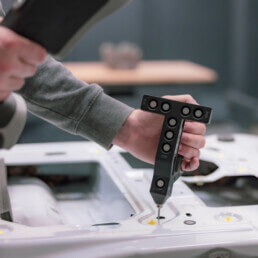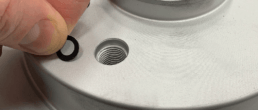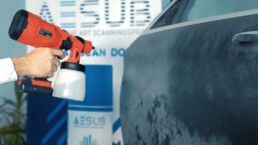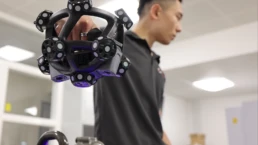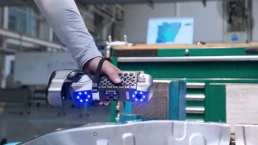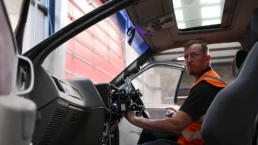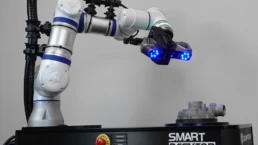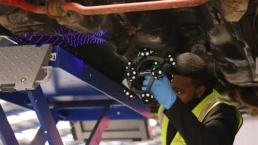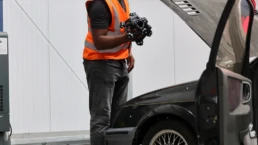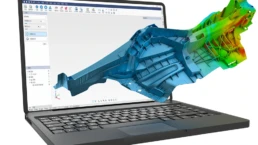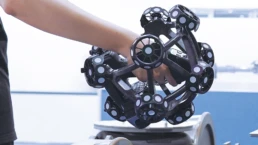Accessories used for 3D scanning can vastly improve the performance accuracy of your scanning processes.
Laser 3D scanning is the most effective way of gathering dimensional data for objects ranging in shape and size from a few millimeters to a few meters. In order to achieve dependable results, users may need additional accessories for the scanning process. In this article, we’ll discuss the uses and benefits of 3D scanning accessories available on the market that can improve scanning performance and user convenience.
Reference Markers for 3D Scanning
Reference point markers are used during the 3D scanning process to ensure high accuracy measurements. The adhesive markers are placed on the part before scanning starts. During scanning, the reference point markers are detected by the scanning system, which makes it possible for the software to align scan data correctly whilst moving around a part by positioning the scanner in 3D space.
You can find both matte and reflective markers in our online shop with dimensions of 1.5mm, 3mm and 5mm in matte finish for use with structured light systems, and 3mm, 6mm and 12mm reflective finish for use with laser based systems. In addition to the disposable and adhesive markers, we also supply magnetic markers which can be reused, keeping the cost of consumables down.
Custom 3D printed marker blocks are also available. These unique multi-faceted reusable blocks allow for a quick and easy set up and very stable scanning conditions. But if you have any questions about your reference marker options please just give us a call and one of our team will help with identifying the optimal solution for your application.
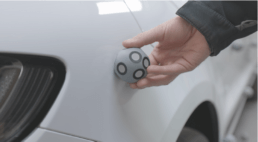
3D Scanning Sprays
For very small objects or highly reflective/transparent surfaces, we also use AESUB scanning sprays. These mattify the object and allow quick and reliable scanning. With laser scanners this is not generally needed, but when working highly reflective or transparent surfaces, it is helpful to use scanning sprays, to help improve data capture speed and quality.
AESUB White and AESUB Blue are our core range of anti-reflective sprays; AESUB White is a permanent spray which provides excellent coverage, but you do need to clean the spray off after use. For customers who prefer not to clean the object after scanning, AESUB Blue has the added benefit that it evaporates over time and thus there’s no need for cleanup afterwards.
An additional option is AESUB Orange which offers the same benefits as AESUB Blue, but with a longer sublimation time, making it ideal for projects with longer scanning times.
Finally, the AESUB Green scanning spray is ideal for large scale projects or projects where controlled automated spraying is required. AESUB Green can also be dispensed from a spray gun to help maximise speed and coverage.
The KSCAN Probe
Finally, the most interesting accessory our team uses is the scanning probe available with the KSCAN Magic handheld scanner from Scantech. This is a tactile measurement accessory which means it works like a probe you normally find on an articulated measurement arm. It enables us to capture holes, slots, planes, and other geometric features without the need for scanning them. The KSCAN Magic with the KSCAN Probe together make up a highly effective combination for scanning large components with small, detailed geometric features.
The process is completely dynamic whereby the scanner can move around the object as usual and then locate the probe in 3D space by recognising a series of markers on the probe itself. This allows us to probe in the same position as the scan data has been collected.
This is particularly powerful when measuring thin sheet metal components where the only other option would be to scan the thickness of material which can significantly increase scanning times.
